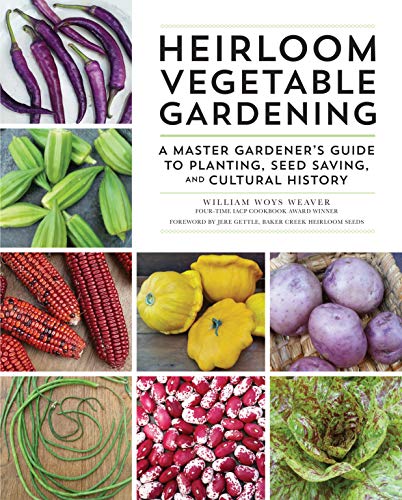 The book “Heirloom Vegetable Gardening” was a classic almost from the moment it was first published in 1997. The author, William Woys Weaver, is a rare scholar of the kitchen garden with a PhD in food ethnography, or the study of cultural eating habits.
The book “Heirloom Vegetable Gardening” was a classic almost from the moment it was first published in 1997. The author, William Woys Weaver, is a rare scholar of the kitchen garden with a PhD in food ethnography, or the study of cultural eating habits.
Weaver easily could have written a pompous tome. Fortunately, he is a skilled writer and hands-on gardener (and cook, too) who combines dry wit with both practical and historical information. I am not an extensive vegetable gardener, but his stories are compelling and I happily read the encyclopedia of recommend varieties from cover-to-cover.
If you do grow your own veg and enjoy experimenting, this book is an investment that will pay in long-term dividends. Now there is a new (2018) edition. While much of the descriptive material and selection of the varieties is the same as the original, there are minor updates and additions. Both editions are available from the Miller Library.
The author is especially interested in how certain foods have connected different cultures. For example, I learned that lima beans are well named, originating in Peru possibly 7,000 years ago and named in English after that country’s capital city. The Spanish occupiers observed that the indigenous people reserved the crop for the elite of their society.
Is that why the Spanish disseminated these delicious beans to the rest of the world? Perhaps. However, when Weaver was asked to cook a dinner of American foods by friends in Germany, he had trouble finding a source for lima beans. Northern Europeans have not embraced this food like Americans because they are a warm weather crop and don’t thrive north of the Alps.
Weaver references many historical writings and includes a gigantic bibliography of cited sources in his appendices. Many are quite old (dating back to 1591) but still very useful for gardening tips, such as putting out whiskey to discourage crows from corn. “I would use the brand of corn whiskey called Rebel Yell. It seems to fit the remedy and evoke some of the sounds I now associate with the birds at the height of their raucous inebriation. Incidentally, it works.”
Published in Garden Notes: Northwest Horticultural Society, Winter 2019